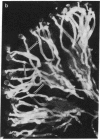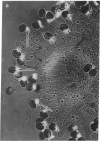Abstract
Pollen hydration and self-incompatibility (SI) in Brassica have been studied by using a combination of in vivo video-microscopy and experiments with metabolic inhibitors. Experiments with cycloheximide confirm earlier observations that pollen hydration is regulated through protein synthesis. No protein or glycoprotein has positively been identified with this event; however, it is unlikely that the total pool of any particular glycoprotein is involved, but rather a newly synthesized or otherwise activated fraction. Micromanipulation of pollen on the stigmatic papillae suggests that access to this hydration regulation system is limited to members of the Brassicaceae: pollen grains of other species—even those possessing dry stigmas—fail to hydrate. It is proposed that an interaction between enzymes of the stigma surface and the superficial layer of the pollen grain coating creates continuity between the content of the papillar wall and the grain protoplast. Inhibition of protein synthesis also overcomes SI, and since the advent of regulated hydration and synthesis of the so-called S-gene glycoproteins coincide with the acquisition of the SI system, there is strong circumstantial evidence that the same molecular species is involved in both processes. Experiments with tunicamycin, which prevents glycosylation of glycoproteins, indicate that the glycosyl groups of the S-gene glycoprotein are required for the operation of the SI system but not for the regulation of hydration. Further experiments suggest that pollen is positively inhibited on incompatible papillae but that this inhibition is biostatic. Recovery from the effects of the SI system appears to involve the metabolism of an inhibitor by the pollen. SI in Brassica thus emerges as a sophisticated process under dynamic control in both the female and male partners. The evolutionary advantages of such a system are discussed.
Keywords: cell recognition, plant glycoprotein, self-incompatibility
Full text
PDF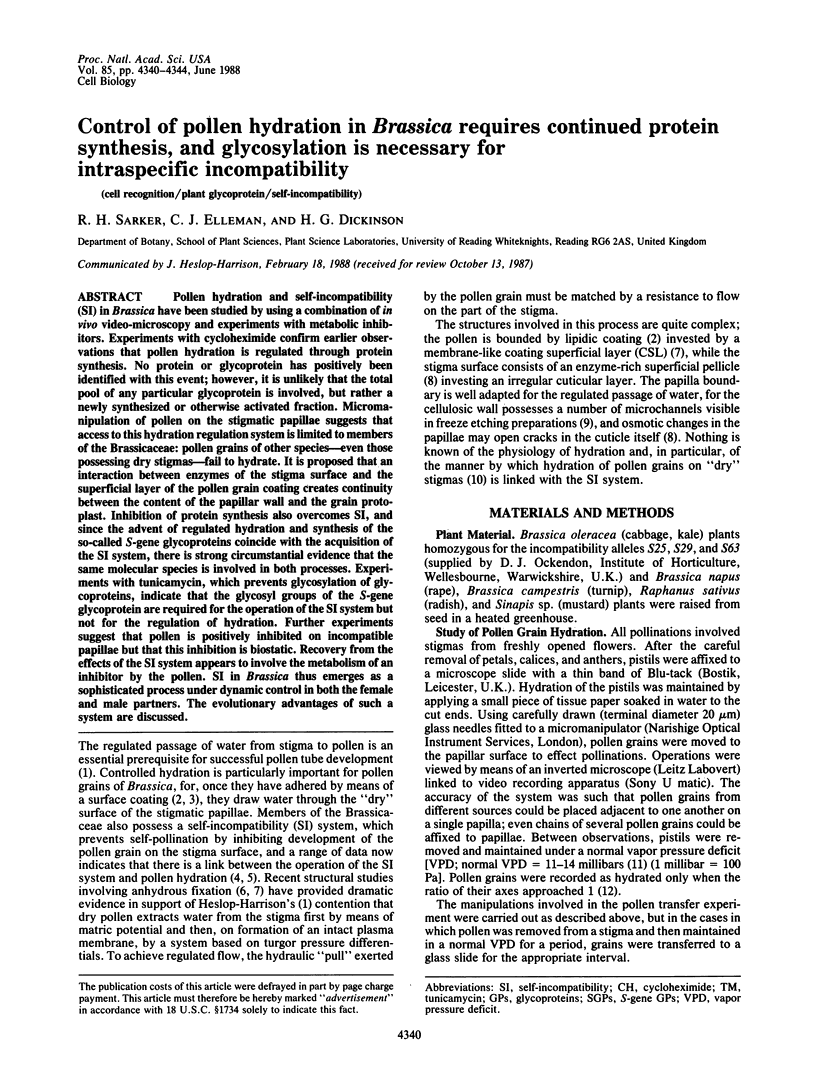
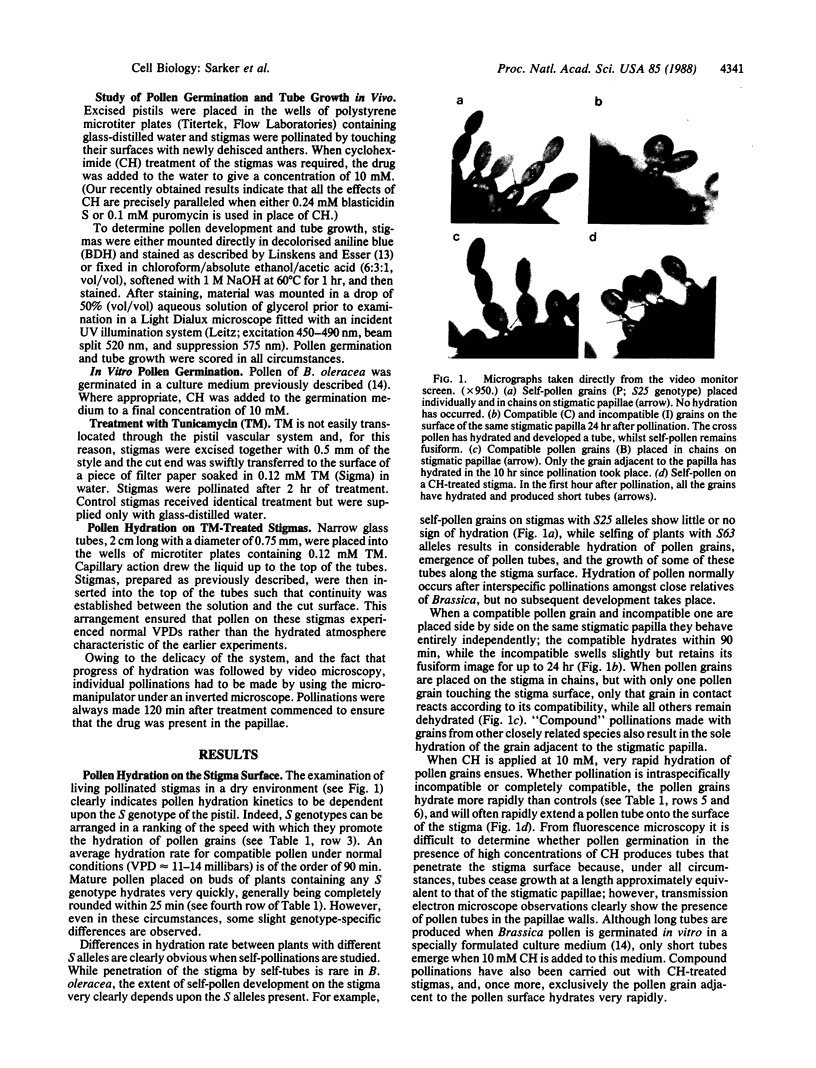
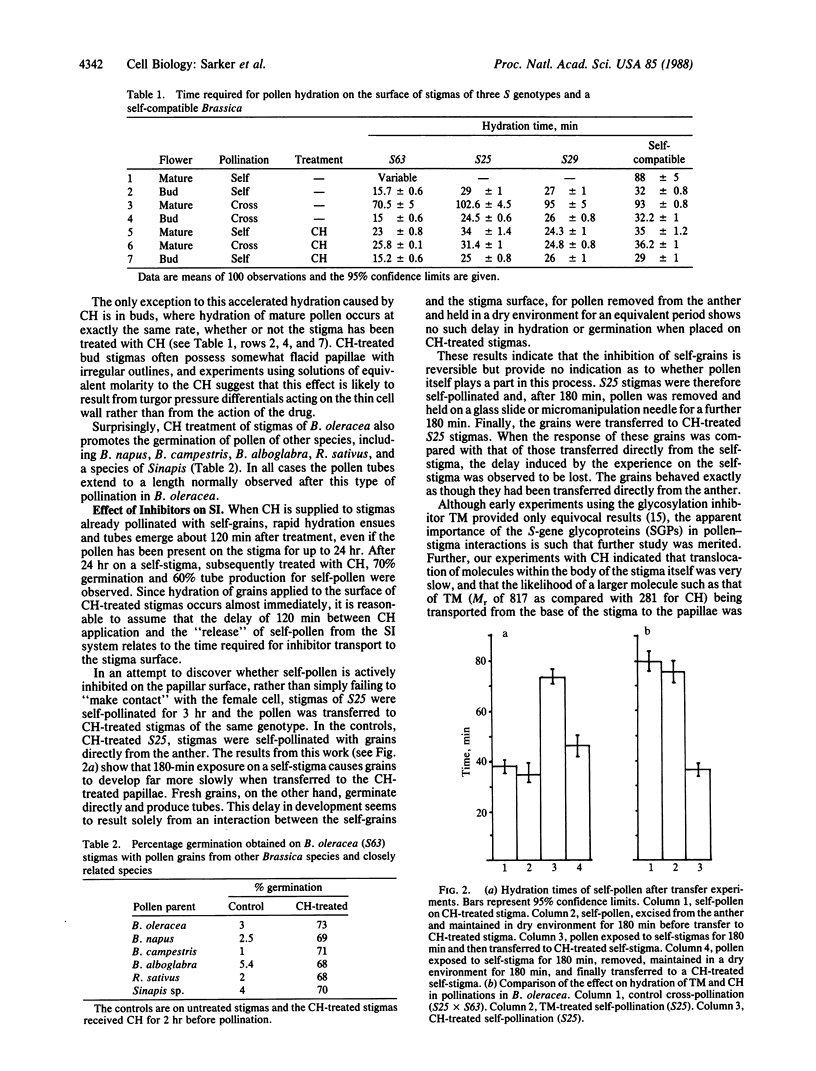
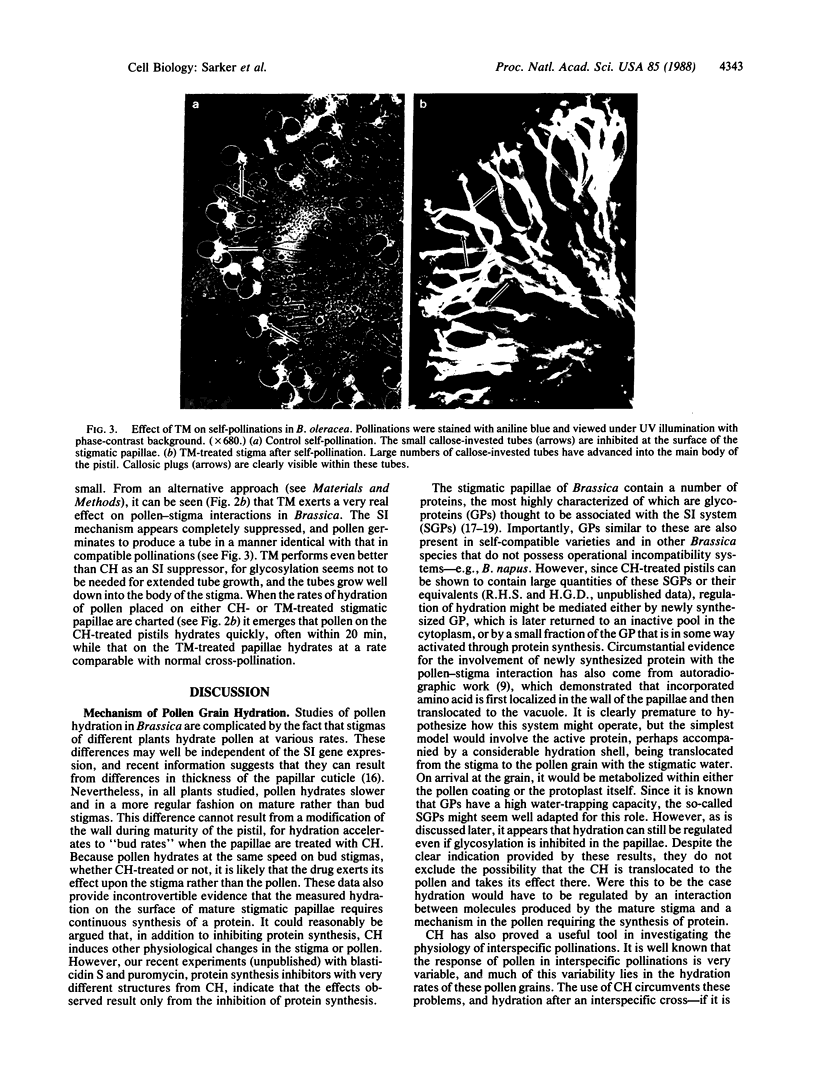
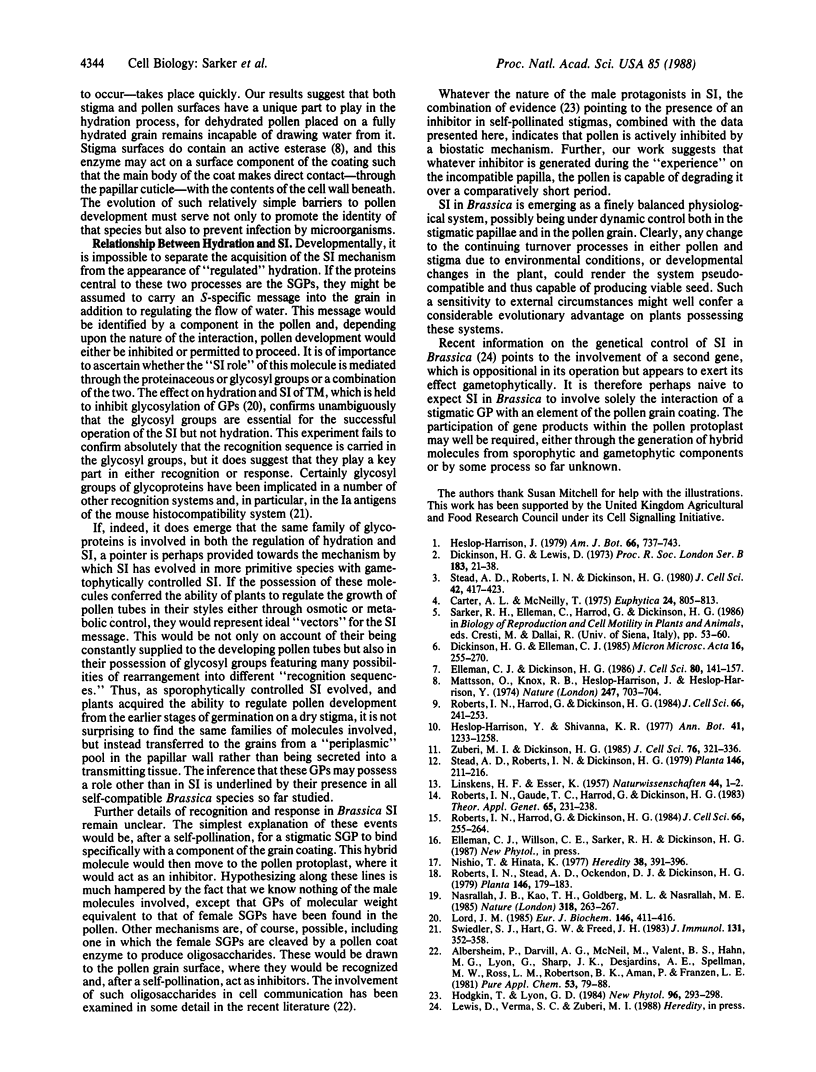
Images in this article
Selected References
These references are in PubMed. This may not be the complete list of references from this article.
- Elleman C. J., Dickinson H. G. Pollen-stigma interactions in Brassica. IV. Structural reorganization in the pollen grains during hydration. J Cell Sci. 1986 Feb;80:141–157. doi: 10.1242/jcs.80.1.141. [DOI] [PubMed] [Google Scholar]
- Lord J. M. Precursors of ricin and Ricinus communis agglutinin. Glycosylation and processing during synthesis and intracellular transport. Eur J Biochem. 1985 Jan 15;146(2):411–416. doi: 10.1111/j.1432-1033.1985.tb08667.x. [DOI] [PubMed] [Google Scholar]
- Roberts F. M., McArthur H. A., Hancock I. C., Baddiley J. Biosynthesis of the linkage unit joining peptidoglycan to poly(N-acetylglucosamine 1-phosphate) in walls of Micrococcus varians ATCC 29750. FEBS Lett. 1979 Jan 15;97(2):211–216. doi: 10.1016/0014-5793(79)80086-1. [DOI] [PubMed] [Google Scholar]
- Roberts I. N., Harrod G., Dickinson H. G. Pollen-stigma interactions in Brassica oleracea. I. Ultrastructure and physiology of the stigmatic papillar cells. J Cell Sci. 1984 Mar;66:241–253. doi: 10.1242/jcs.66.1.241. [DOI] [PubMed] [Google Scholar]
- Roberts I. N., Harrod G., Dickinson H. G. Pollen-stigma interactions in Brassica oleracea. II. The fate of stigma surface proteins following pollination and their rôle in the self-incompatibility response. J Cell Sci. 1984 Mar;66:255–264. doi: 10.1242/jcs.66.1.255. [DOI] [PubMed] [Google Scholar]
- Stead A. D., Roberts I. N., Dickinson H. G. Pollen-stigma interaction in Brassica oleracea: the role of stigmatic proteins in pollen grain adhesion. J Cell Sci. 1980 Apr;42:417–423. doi: 10.1242/jcs.42.1.417. [DOI] [PubMed] [Google Scholar]
- Swiedler S. J., Hart G. W., Freed J. H. Characterization of the oligosaccharides from the invariant chain associated with murine Ia antigens. J Immunol. 1983 Jul;131(1):352–358. [PubMed] [Google Scholar]
- Zuberi M. I., Dickinson H. G. Pollen-stigma interaction in Brassica. III. Hydration of the pollen grains. J Cell Sci. 1985 Jun;76:321–336. doi: 10.1242/jcs.76.1.321. [DOI] [PubMed] [Google Scholar]




